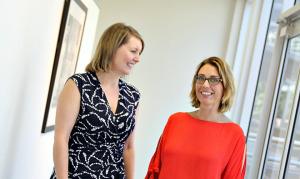Customer experience (or CX) has been a hot topic for some time now and companies are increasingly focussing on it in a bid to differentiate their brand from others.
With more consumer control and competition from new market entrants, switching to a customer-first approach is critical for aged care providers that want to grow and maintain their business.
Mel Leahy, Chief People Officer at Bolton Clarke, explains how an organisation’s core values and hiring practices can help them achieve this customer-centric focus.
Why the changes?
The aged care system is undergoing a number of fundamental changes, thanks to the progressive rollout of government reforms designed to make it more affordable, sustainable and better for every Australian.
Provider services and offerings are also being shaped by the changing preferences of a more diverse customer base and the increased demands of an ageing population, according to Leahy.
“We know that around 25 per cent of the Australian population will be aged 65-plus by 2050, and the number of people aged 85-plus will multiply by four over the same period,” she says. “So it’s estimated that we’ll have more than 350,000 aged care residents in Australia, up from fewer than 200,000 in 2017, which is a huge amount of growth.
“The other thing that is really interesting is the diversity of our clients and residents – almost one-third of older Australians were born outside of Australia, so it’s important that we understand the different expectations of those customers as well.”
There’s also greater demand for support services, as well as a need for new ways of delivering those services based on the customer’s needs and the journey they want.
This diversity and the need to expand on the customer experience is affecting how providers communicate with various consumer groups, for example, and how they develop health literacy, wellness and reablement programs – a key focus in the sector at the moment.
4 key areas of customer-first recruiting
- Look for customer-service skills, even if it’s in other sectors.
- Consider testing the candidate’s proclivity for customer service.
- Observe the candidate’s behaviour and how they interact with others.
- Ask probing questions during reference checks.
“For us, consumer preferences and research are leading to a health revolution built on the provision of wellness services, ageing well and supporting people to stay more active, independent and engaged in the community as they age,” Leahy says.
“How we expect to live in our aging years is quite different to how our grandparents expected to live and how our parents expect to live, so there’s that constant change and evolution of what aged care looks like and what it means.”
For Leahy, the most important reason for having a customer-first attitude is also the simplest one: aged care providers are dealing with people who deserve to be treated with dignity, respect and empathy.
“We know that around 25 per cent of the Australian population will be aged 65-plus by 2050, and the number of people aged 85-plus will multiply by four over the same period.” – says Mel Leahy, Chief People Officer at Bolton Clarke.

“For us, consumer preferences and research are leading to a health revolution built on the provision of wellness services, ageing well and supporting people to stay more active, independent and engaged in the community as they age.”
A customer-focused core
HR managers, hiring managers and operational managers can help establish a customer-first attitude throughout an organisation by embedding it into their day-to-day operations, initiatives and practices.
For example, Leahy says that cementing “customer satisfaction” – or “putting people first” – as one of its four core values keeps Bolton Clarke living and breathing it every day.
“When I look at our performance-management processes and the feedback that we give to people, we’re talking about what behaviours they need to exhibit that demonstrate that customer-first or customer-satisfaction principle,” she says.
“Our learning programs are built around those values as well, so we have a customer-led experience program that we are in the process of rolling out to all employees, and that’s really around understanding what our products, offerings and services look like from the customer perspective, and getting them to think about what’s happening in the customer’s world.”
The 4 secrets to customer-first hiring
To ensure that building a customer-centric workforce continues, Leahy encourages providers to focus on four key areas of the recruiting process.
1. The first is not ruling out people who have had really strong customer experience in other industries or sectors but may be new to aged care.
2. The second is using values-based assessments to determine a candidate’s preference towards customer service.
3. The third is direct observation.
“Whether it’s a traditional interview or an assessment-centre-style process, observe employee behaviour,” Leahy says. “For example, how well do they listen to the questions that are being asked [by customers]? Are they asking questions to ensure they’ve understood? How are they interacting with you and other people? Looking for people that are warm and engaging in that environment is also important, and it helps you form an opinion of their customer focus.”
4. The fourth area is ensuring you check references thoroughly.
“All too often, by the time hiring managers get to reference checking they just want a tick and to make an appointment,” Leahy says. “But it’s really important to probe into candidates’ past employment history, and to listen to the responses, and sometimes to listen to the silence in the responses, which just might give you some more insight.
“I think when you put those four key areas together, you’ve got a much better opportunity of finding those people who already demonstrate a really strong customer-based focus, or that customer-first attitude.”




